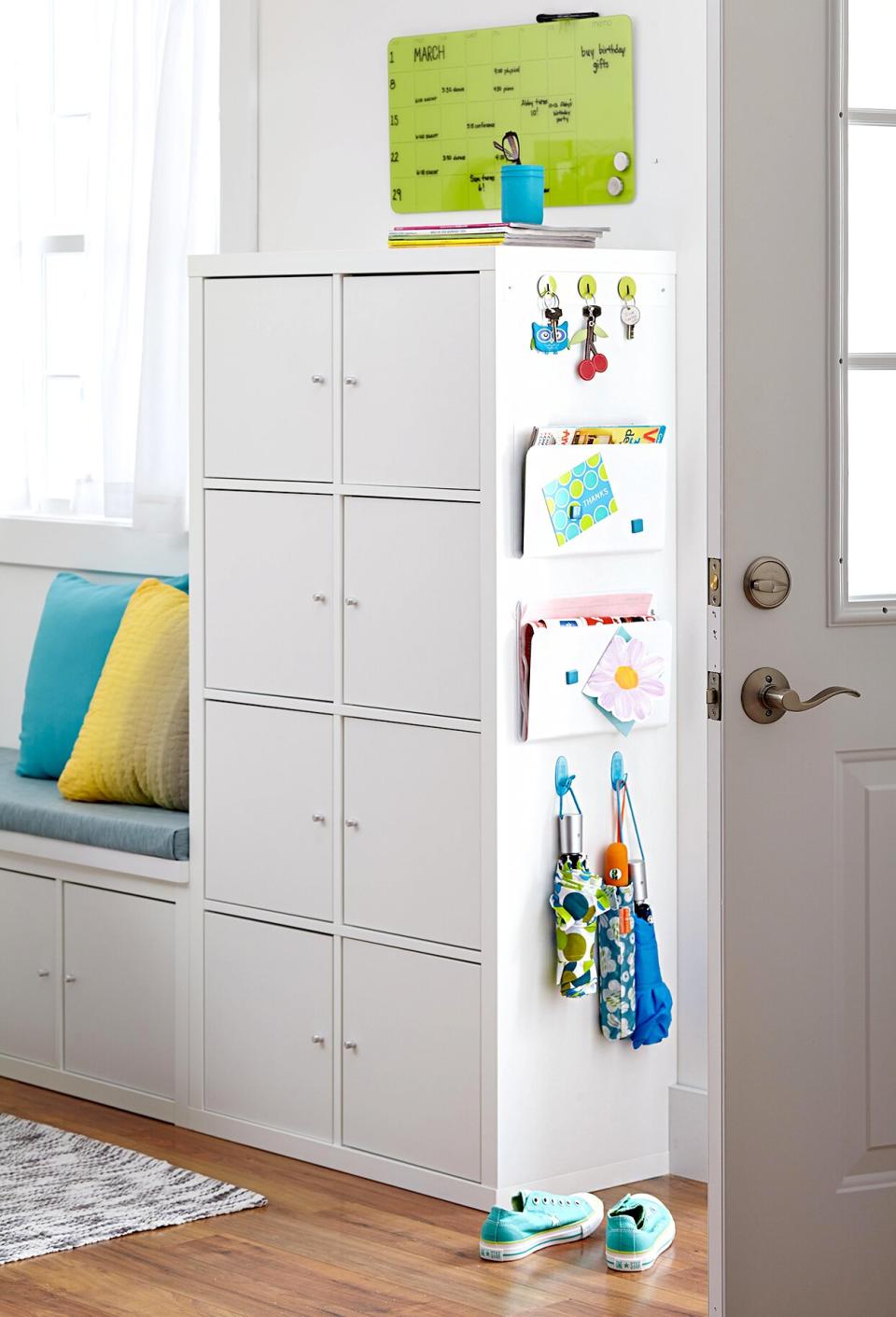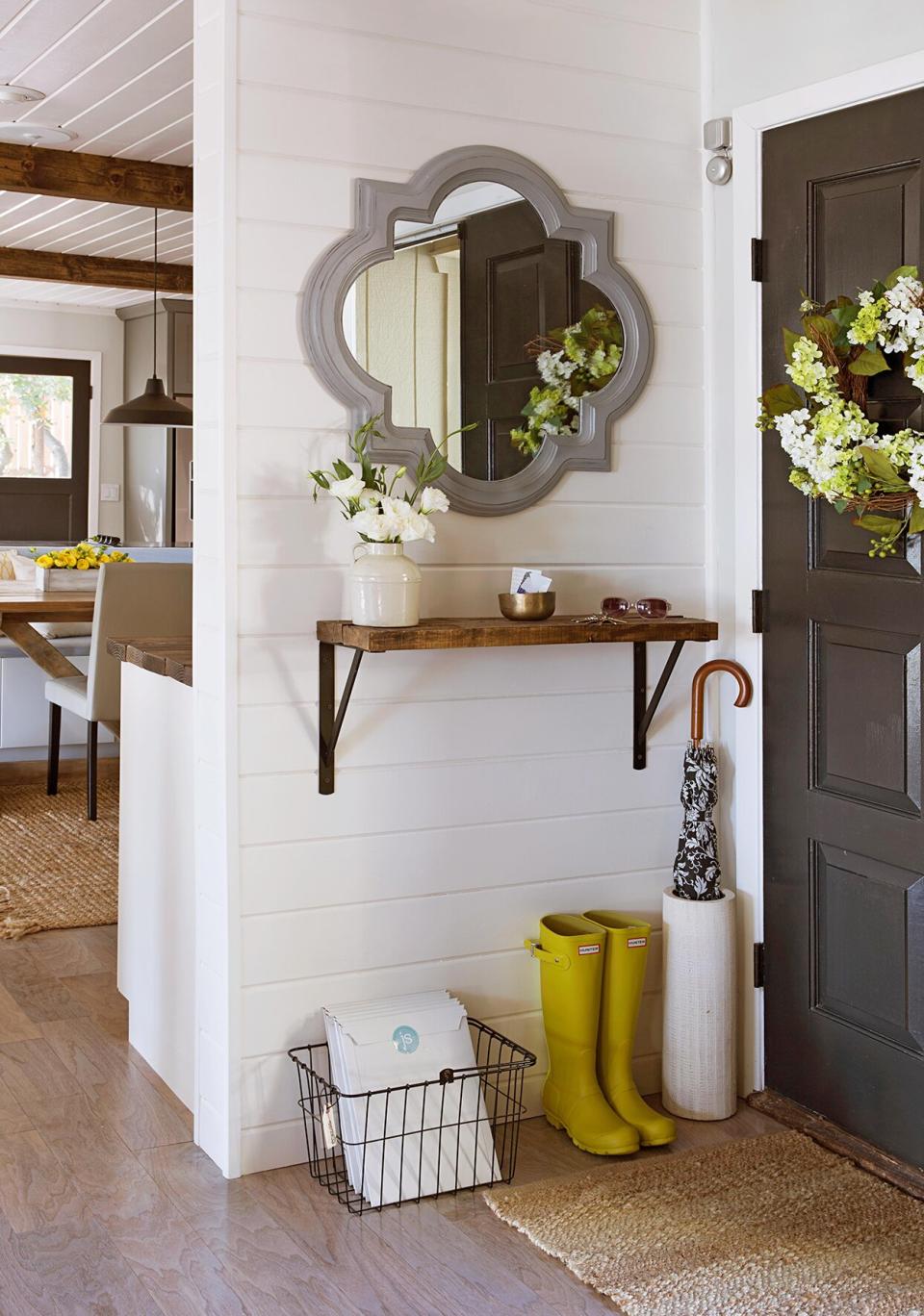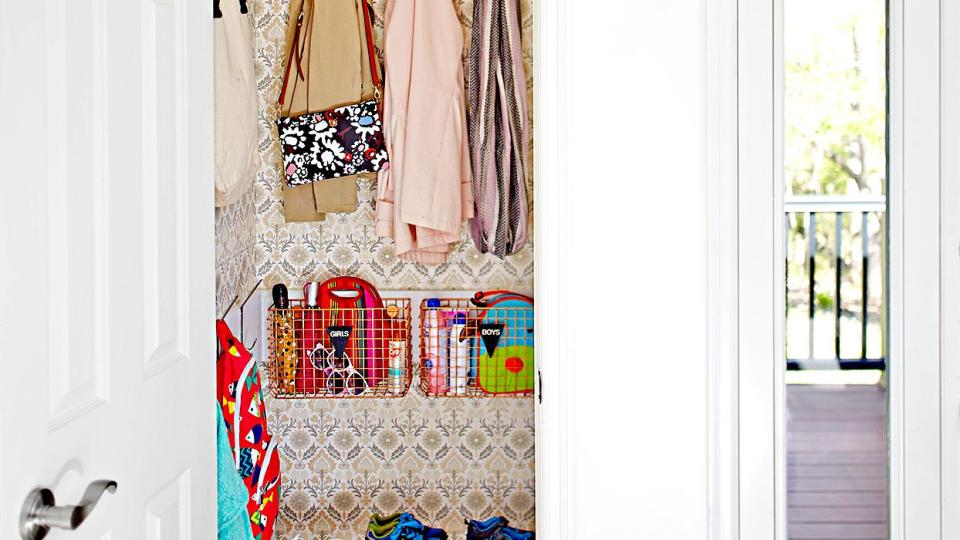9 Must-Know Planning Tips for Effective Mudroom Storage
Planning a mudroom is all about making the most of available space. The most common spot for a mudroom is near the garage or back entry, but the ideal area is where your family most commonly enters and leaves the house. While some homes feature an expansive entryway area, others have more limited space around the door. When space is tight, a shared area (such as the laundry room) or even a coat closet can serve as a mudroom. No matter where your mudroom is located, it’s important to think through storage needs and design a space that works for your family. These nine helpful tips will help you make the most of your mudroom.

Jay Wilde
1. Utilize Several Spaces
A mudroom doesn't have to be a single room; it can be a cluster of hardworking spaces. An adjacent pantry, laundry room, or closet for brooms, mops, vacuums, and cleaning supplies can all create a center for household management. Consider dividing a larger space into zones to keep the flow of traffic clear coming in and out of the door.

Marty Baldwin
2. Take Inventory of Mudroom Items
List the things your family takes in and out of the house every day (such as keys, wallets, and bags), then outfit your entry space accordingly. Include a designated cabinet, cubby, locker, or set of hooks for each family member. Additional cabinets for miscellaneous items come in handy, too.

Cameron Sadeghpour
3. Get Organized
Turn your mudroom into a message center by placing a desk or cabinet in your entryway. Mount a chalkboard or a bulletin board for notes and quick reminders as you head out the door. This creates a convenient communication hub and a place to organize photos, coupons, and flyers.

Laura Moss Photography Corp
4. Focus on Durability
When designing a mudroom, stick to surfaces that can withstand the elements over time. Stone or tile floors and laminate cabinets will still look good after years of exposure to wet raincoats and muddy boots. Plus, these easy-clean surfaces will help simplify your regular tidying routine.

Kim Cornelison
5. Remember to Accommodate Guests
Design your space with your live-in family members in mind, but consider the needs of guests when they come to visit. Include a few extra hooks for your guests' coats and bags. Add a bench as a comfortable perch for taking off and putting on shoes.

Peter Rymwid
6. Plan for Pets
An entryway can double as a hub for your furry friends. Install hooks on the mudroom wall for leashes, and make room on shelves or in cabinets for baskets of toys. A durable rug brightens up the space and helps protect your floors from wet paws.

Jody Garlock
7. Think Seasonally
When summer comes, you won't want to dig past boots and scarves to get to flip-flops when the pool is calling your name. Streamline your mudroom by storing only items you'll need regularly in the next few months. Plan to stow off-season gear in another location.

Marty Baldwin
8. Reconfigure Closet Space
Create a makeshift mudroom where space is limited with a few clever closet updates. Swap out the horizontal hanging rack for wall hooks that allow more access inside the closet. Mount wire baskets on the wall for grab-and-go items and add tiered storage for shoes. A pretty rug makes the small space feel more like a standalone room.

Nathan Schroder Photography
9. Combine Open and Closed Storage
For the most efficient mudroom storage, use a combination of storage types. Some items, like backpacks and everyday coats, are best stored on hooks or in an open area for easy access. Smaller items, such as shoes, sports equipment, and gloves, can be tucked away in baskets or bins to keep them contained and out of the way.

